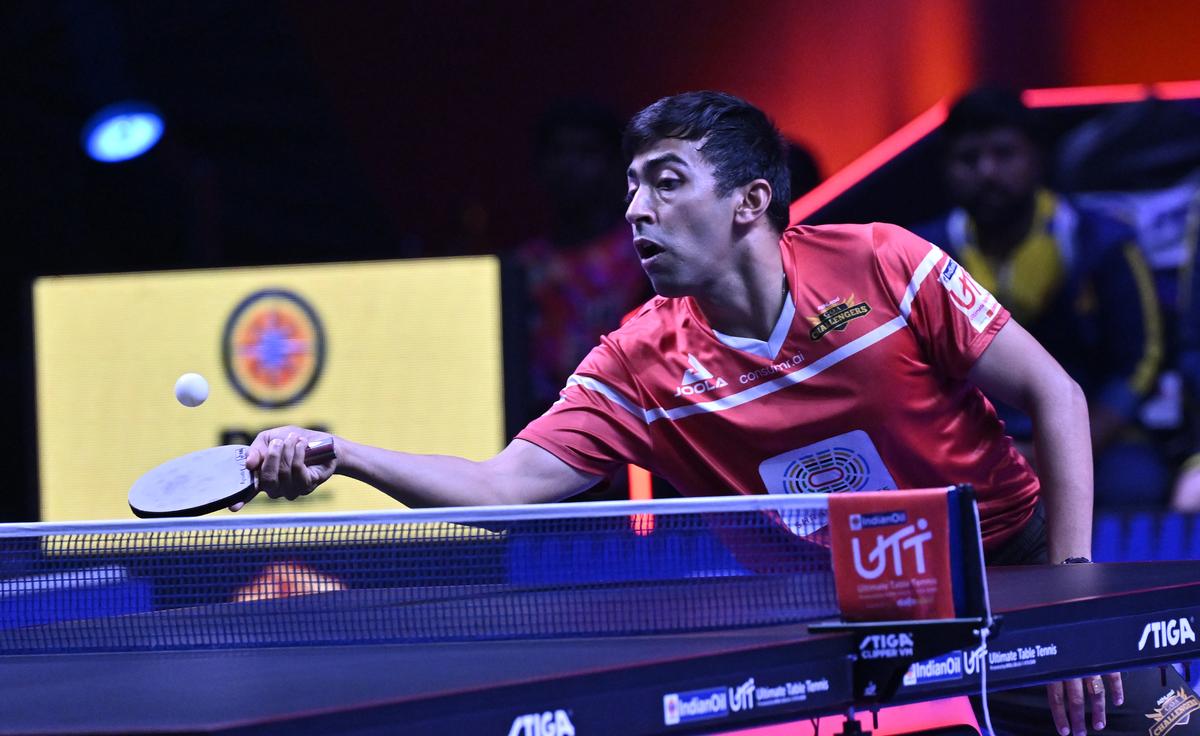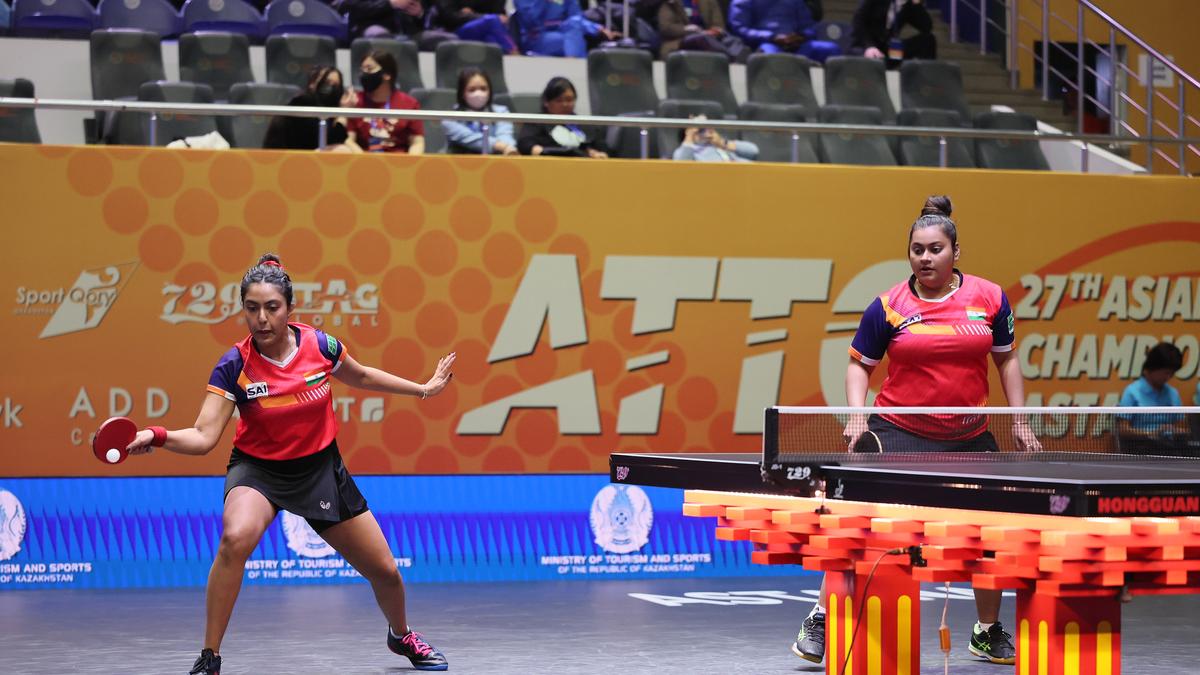Asian Table Tennis Championships review: Plenty of positives and a historic first
In recent years, Indian table tennis players have gained significant attention by consistently defeating challengers from outside the Commonwealth nations. From age-group competitions to senior levels, their impressive performances have boosted India’s standing in the global table tennis community.
Table tennis is among the few sporting disciplines where Asian nations dominate major competitions. China, Japan, the two Koreas, and Chinese Taipei have consistently produced talents, helping the continent maintain its lead over opposition from the west.
In this context, India’s third successive Asian Championships bronze medal in the men’s team event, along with the second continental bronze by the women’s team and the maiden medal for the rising pair of Ayhika Mukherjee and Sutirtha Mukherjee, is nothing short of remarkable.
Amid this success, the Indian women’s stunning 3-2 victory over second-seed Korea was somewhat overshadowed. This victory came after World No. 90 Ayhika Mukherjee stunned World No. 9 Shin Yubin 3-2 in the opening clash and later secured the tie with a 3-1 win over Jeon Jihee.
It is worth remembering that at the World Championships earlier this year, Ayhika also stunned World No. 1 Sun Yingsha. Together, in the quarterfinals, World No. 15 pair of Ayhika and Sutirtha overcame Korea’s Kim Nayeong and Lee Eunhye 3-1, ensuring a historic first bronze in the women’s paired event. However, in the semifinals, the Japanese duo of Miwa Harimoto and Miyuu Kihara, the eventual silver medallists, proved too strong for the Indians.
Ayhika and Sutirtha, gradually gaining rankings and respect, announced their arrival by shocking Chinese World Champions and then World No. 2 Wang Yidi and Chen Meng in the quarterfinals of the Asian Games last year. This stunned the partisan home crowd in Hangzhou.
Following the Indian men’s and women’s teams qualifying for the Olympics for the first time in Paris this year, these twin-team medals reinforce the notion that the current crop of players has the potential to excel, particularly in team events.
Until 2018, India’s triumphs primarily came from the Commonwealth Games and the Commonwealth Championship, where the decline of Singapore, England, and Hong Kong coincided with the steady rise in India’s performance levels.
The mixed doubles bronze for Sharath Kamal and Manika Batra in the 2018 Asian Games, the women’s doubles bronze at the 2022 Asian Games, and the recent Asian bronze by the gallant Ayhika-Sutirtha duo have forced the competition to take India’s challenge more seriously in paired events.
Team golds at the Commonwealth level and three men’s team bronze medals from the Asian Championships in Doha (Qatar, 2021), Pyeongchang (South Korea, 2023), and Astana (Kazakhstan, 2024) have all contributed to India’s newfound identity and respect among the world’s best.
Though the domestic structure, comprising the National Championship, Inter-Institutional Championship, and five National Ranking tournaments, is considered adequate by those governing the sport, overseas participation has increased significantly due to individual initiatives.
The introduction of the Ultimate Table Tennis League has also played a key role in helping Indian players test their skills against some of the top 25 ranked players in both categories. Training as teammates with these higher-ranked overseas players for their respective franchises has enabled Indians to shed self-doubts in their preparations for international competitions.
At the 2024 Astana Championship, where withdrawals and upsets in individual events raised several eyebrows, Japan won three gold, two silver, and three bronze medals to top the tally, ahead of China (two gold, two silver, and a bronze), DPR Korea (a gold, a silver, and a bronze), and South Korea (a gold and three bronzes).
India returned with three bronze medals, matching its previous best (bronze in the men’s team and two in men’s doubles in 2021) since 1972, when the competition was renamed. From 1952 to 1970, the continental championship was organised by the Table Tennis Federation of Asia before the Asian Table Tennis Union took over. India’s first bronze came in the women’s team event in the 1960 edition.

Stepping up: In the last few years, with G. Sathiyan struggling, Harmeet Desai has won some key matches in the team events.
| Photo Credit:
M VEDHAN
Stepping up: In the last few years, with G. Sathiyan struggling, Harmeet Desai has won some key matches in the team events.
| Photo Credit:
M VEDHAN
The format of the continental team championship places the top six teams from the previous edition in the Champions Division. These teams await two teams from the First Division League in the knockout phase, starting from the quarterfinals.
The Indian men’s team, by virtue of finishing fifth in Yogyakarta (Indonesia, 2019), has remained in the Champion Division by making the semifinals since then. The losing semifinalists are awarded bronze medals.
This time, India faced host Kazakhstan for a place in the semifinals. The presence of World No. 40 Kirill Gerassimenko gave Kazakhstan an edge, but India’s overall strength proved decisive.
Manav Thakkar and Harmeet Desai, ranked 59 and 87 respectively, defeated Gerassimenko in the first and fourth singles, offsetting Sharath’s defeat to Aidos Kenzhigulov. In the second match, Harmeet comfortably beat Alan Kurmangaliyev 3-0 to give India a commanding 2-0 lead.
In the crucial fourth singles, Harmeet twice came back from a deficit to overcome Gerassimenko, ending Kazakhstan’s medal hopes. Over the past few years, with G. Sathiyan struggling, Harmeet has delivered in key matches. Once again, he did not let his teammates down.
India’s 0-3 defeat to a formidable Chinese Taipei in the semifinals – mirroring the result of their 2023 encounter at the same stage – left India celebrating a hat-trick of men’s team bronze medals from the Asian Championships.
Overall, despite some disappointments in individual events, there were several joyous moments and positive takeaways for India.



